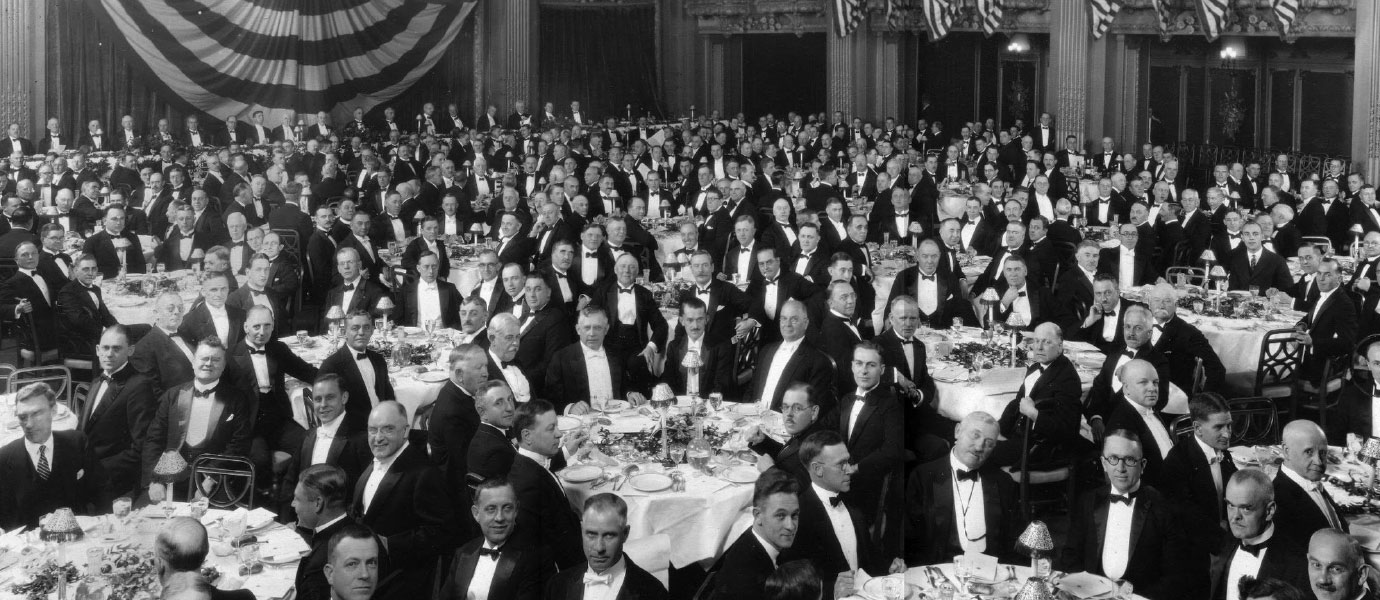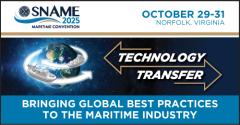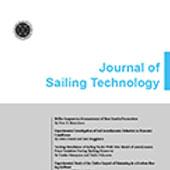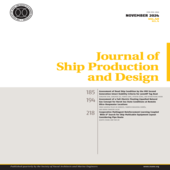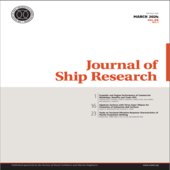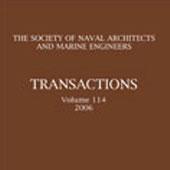Technical and research (T&R) | Bulletins and reports
This bulletin documents those features of SWATH ships judged to be of importance of prospective SWATH ship owners and designers. The basis for this document is the information available for the SWATH ships produced as well as the supporting technology. The information provided forms a basis for assessing the capabilities and limitations of the SWATH concept as well as providing an overview of SWATH technology. The overall design of SWATH ships as well as major topics such as structures, loads, machinery, and hydrodynamic performance are discussed in general terms to provide a general understanding of them. A more detailed treatment of these subjects is available through the more specialized technical literature indicated by the references.
The Software User's Manual for the Propeller Selection and Optimization program (PSOP) is intended to present the elements necessary to install and execute the computer program. It contains a description of the theory employed in the program as well. The manual provides a complete listing of the source code of the program.
Compartment and Access (C&A) drawings define and document a ship’s configuration for the development of a detailed design. The C&A Drawings are used to define the boundaries of compartments for the development of access openings, passageways, piping and ventilation systems, damage control closures, structural interferences, and hull outfit layouts. Accesses shown on the drawings are defined for both personnel and equipment removal as identified on the contract general arrangement drawings and the specifications. The details on the C&A drawings should be specifically and clearly defined to provide detailed design personnel with information to develop distributive systems.
The purpose of this Bulletin is to document naval architectural practices and conventions used in the estimation and determination of the weight, centers of gravity and weight moments of inertia for surface ships, and to reference sources of weight estimating data for ships and their components for use at various stages of design.
Conventions and practices for offshore drill rigs, high-speed craft, and submarines are mentioned in some instances to demonstrate alternative methodologies but are documented only by references. Military practices and conventions are summarized and referenced but not fully documented.
The purpose of this Bulletin is to document naval architectural practices and conventions used in the estimation and determination of the weight, centers of gravity and weight moments of inertia for surface ships, and to reference sources of weight estimating data for ships and their components for use at various stages of design. Conventions and practices for offshore drill rigs, high-speed craft, and submarines are mentioned in some instances to demonstrate alternative methodologies but are documented only by references. Military practices and conventions are summarized and referenced but not fully documented. Throughout this document, the term weight is used to represent all the mass properties of a ship or object. These properties include the weight, center of gravity, weight moments, and weight moment of inertia.
Technical studies provide insight into leaders that help them make decisions. These decisions can be of small magnitude or could impact the expenditure of billions of dollars and the lives of many individuals. Following repeatable, documented engineering processes to produce reliable and timely technical studies can significantly enhance the quality of these decisions.
This guide was written for engineers and naval architects in planning and executing technical studies.
This document provides a guide to be used during the pre-contract stage of ship design to achieve a "lean" design with reduced work scope. It provides a collection of documented best-practices and design guidelines based on world-class product-oriented ship design processes stressing the need to make all key ship arrangements, system design, and construction decisions early in Basic or Pre-contract Design.
The document is intended as a reference for ship design managers and Integrated Product Teams (IPT) charted with the development of high-quality and low-cost contract designs. Additionally, the guide provides state-of-the-art training material for students of Naval Architecture and Marine Engineering.
Set-based design (SBD) is a method for performing design discovery by way of elimination. SBD is characterized by:
1. communicating broad sets of design values, 2. developing sets of design solutions, 3. evaluating sets of design solutions by multiple domains of expertise, 4. delaying design decisions to eliminate regions of the design space until adequate information is known, and 5. documenting the rationale for eliminating a region of the design space. SBD concentrates on eliminating infeasible and highly dominated regions of the design space. An infeasible region is a region where there is high confidence that a solution does not exist. A highly dominated region is a region where another feasible region is evaluated as being better in every metric of interest. Regions of the design space can be confidently eliminated based on partial information. In SBD, the ultimate solution is obtained incrementally as new information is incorporated.
To be precise, many decisions are made regarding what the solution is not; this occurs as supporting information becomes available. The remaining analysis may focus on reduced design space. In this manner, designs can often be accomplished faster and with greater robustness as compared to traditional methods.
This guide is developed to provide weight classification guidance and process improvements to augment the U.S Navy’s 1985 Edition of the Expanded Ship Work Breakdown Structure (ESWBS). In recent years naval architects and shipbuilders have introduced new technologies into ship designs and construction practices. The current ESWBS classification does not provide adequate guidance on how to use the weight classification for new technologies, systems, and practices. As a result, SAWE and SNAME jointly set up a workshop(s) to identify and provide guidance to address the proper classification of these newer systems for the appropriate assignments in the weight estimates for future ships as well as to provide a means to cross reference previous historical weight data. Also, the workshop(s) reviewed the current ESWBS and recommended modifications to help ensure that the potential of duplications, missed classification of weight data, inconsistencies within ESWBS, and provide greater clarification in the future as well as assist in cross referencing of historical weight data. A technical paper and presentation were made at SAWE’s Annual International Conference in 2015 [1], which documented the initial findings of the workshop. This guide is a result of over a ten-year effort and is intended to be used as guidance to augment the classification of weight reporting using the 1985 Edition of ESWBS [2].
T&R Bulletin 8-1 is a 687 page soft cover book.
The Guidelines for Marine Forensics Investigations, developed by a variety of maritime experts including engineers, architects, historians, anthropologists, filmmakers, and hydrodynamicists, it is intended to be used by professional and amateur investigators in the field of marine forensics investigations.
The detailed manual showcases information gleaned from diving and marine forensic analysis conducted on historic shipwrecks including specific examples from the Titanic, Britannic, Edmund Fitzgerald, Lusitania, Andrea Doria, and Bismarck and many others. Written by leading experts in the burgeoning field of marine forensics investigations, authors include Guidelines for Marine Forensics Investigations editor Sean Kery, Senior Hydrodyamicist, and Vice Chairman of the Marine Forensics Committee, and world-renowned naval architect William Garzke, Chairman of the Marine Forensics Committee of SNAME and Symposium Chairman. Expert in passenger ship design, Philip Sims, Naval Marine Engineer Principal Leader, CSC, and Titanic director and deep-sea underwater explorer and inventor of autonomous underwater 3-D cameras, James Cameron also contributed to the development of the guidelines as well as Paul Henri Nargeolet, who has been the chief investigator of the Titanic wreck and developer of techniques in deep ocean exploration.
